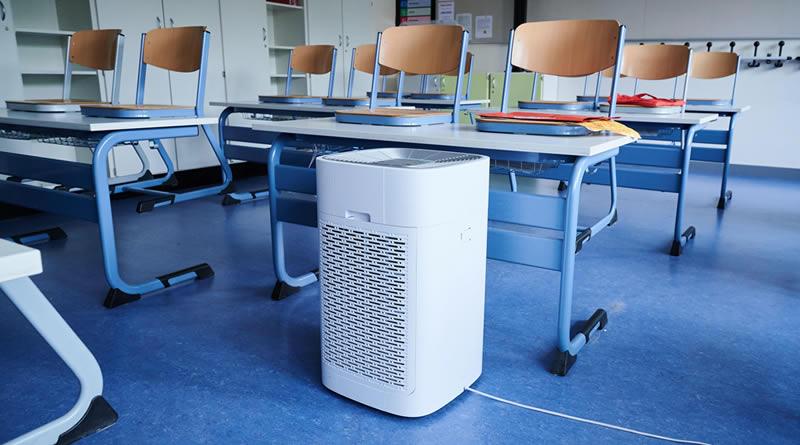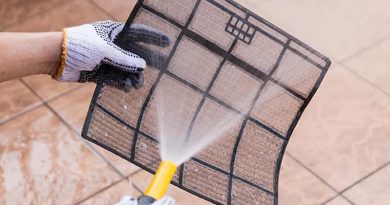Understanding How Heating and Cooling Systems Work and Their Impact on Indoor Air Quality
Heating and cooling systems play a crucial role in maintaining a comfortable indoor environment. Whether it’s staying warm during the winter or keeping cool in the scorching summer months, these systems are essential for our day-to-day comfort. However, their impact extends beyond just temperature regulation. In this article, we will explore how heating and cooling systems work and delve into their influence on indoor air quality.
How Heating Systems Work
Heating systems employ various methods to generate and distribute warmth throughout a space. The most common type is a central heating system, which utilizes a furnace or a boiler. The furnace heats air, while a boiler heats water, which then circulates through pipes or radiators. These systems can be powered by electricity, natural gas, oil, or even renewable energy sources such as geothermal heat pumps.
When the heating system is activated, the heat source warms the air or water, which is then distributed through a network of ducts or pipes to different rooms or zones in the house. The warm air or water transfers its heat to the surrounding objects and people, raising the indoor temperature to the desired level.
How Cooling Systems Work
Cooling systems, commonly known as air conditioning systems or AC, operate on the principles of refrigeration. They remove heat from the indoor air and release it outside, thereby cooling the indoor environment. The most prevalent type of cooling system is the central air conditioner, which consists of an outdoor unit containing a compressor, condenser, and an indoor unit with an evaporator coil.
When the cooling system is activated, the compressor in the outdoor unit pressurizes a refrigerant, usually a chemical compound with excellent heat transfer properties. The compressed refrigerant moves to the indoor unit, where it expands and evaporates in the evaporator coil, absorbing heat from the surrounding air. The cooled air is then blown into the living space through ducts or vents, while the heated refrigerant is pumped back to the outdoor unit to release the absorbed heat.
The Impact on Indoor Air Quality
Heating and cooling systems play a crucial role in maintaining indoor air quality. Properly functioning systems help remove airborne pollutants, regulate humidity levels, and provide ventilation. However, inadequate maintenance or outdated systems can have adverse effects on air quality.
Air filters are an integral part of heating and cooling systems. They trap dust, allergens, and other airborne particles, preventing them from circulating throughout the house. Regularly replacing or cleaning these filters is essential to ensure their effectiveness in improving indoor air quality.
Poorly maintained systems can also contribute to the growth of mold and bacteria. Moisture buildup in ducts or in and around the equipment can create a conducive environment for these harmful microorganisms. Regular maintenance, including duct cleaning and moisture control, is crucial to prevent such issues and maintain a healthy indoor environment.
In addition, outdated or inefficient systems may consume more energy, leading to increased carbon emissions and higher utility bills. Upgrading to energy-efficient models not only helps reduce environmental impact but also improves indoor air quality by providing better temperature and humidity control.
Understanding how heating and cooling systems work and their impact on indoor air quality can empower homeowners to make informed decisions regarding system maintenance, upgrades, and air quality improvement measures. By ensuring proper maintenance, utilizing high-quality air filters, and considering energy-efficient options, homeowners can create a healthier and more comfortable living environment.
Remember, the key to a healthy and pleasant indoor environment lies in the efficient operation of heating and cooling systems and the conscious efforts made to maintain good indoor air quality. By being proactive and knowledgeable about these systems, homeowners can enjoy optimal comfort while prioritizing their health and well-being.
So, whether it’s staying cozy during the chilly winter nights or keeping cool on hot summer days, understanding the inner workings of heating and cooling systems is essential. By investing in regular maintenance, choosing energy-efficient models, and implementing air quality improvement measures, homeowners can create a living space that is not only comfortable but also promotes better indoor air quality.
In conclusion, heating and cooling systems play a vital role in maintaining a comfortable indoor environment. They work by generating and distributing warmth or removing heat from the air, depending on the season. Additionally, these systems have a direct impact on indoor air quality. Proper maintenance, including the regular replacement or cleaning of air filters, is crucial for trapping airborne particles and preventing the growth of mold and bacteria. Upgrading to energy-efficient models not only reduces environmental impact but also improves temperature and humidity control. By understanding how these systems work and their influence on indoor air quality, homeowners can make informed decisions to ensure a healthier and more enjoyable living space.
Remember, a well-functioning heating and cooling system, combined with conscious efforts to maintain good indoor air quality, can contribute to a comfortable and healthy home environment.




